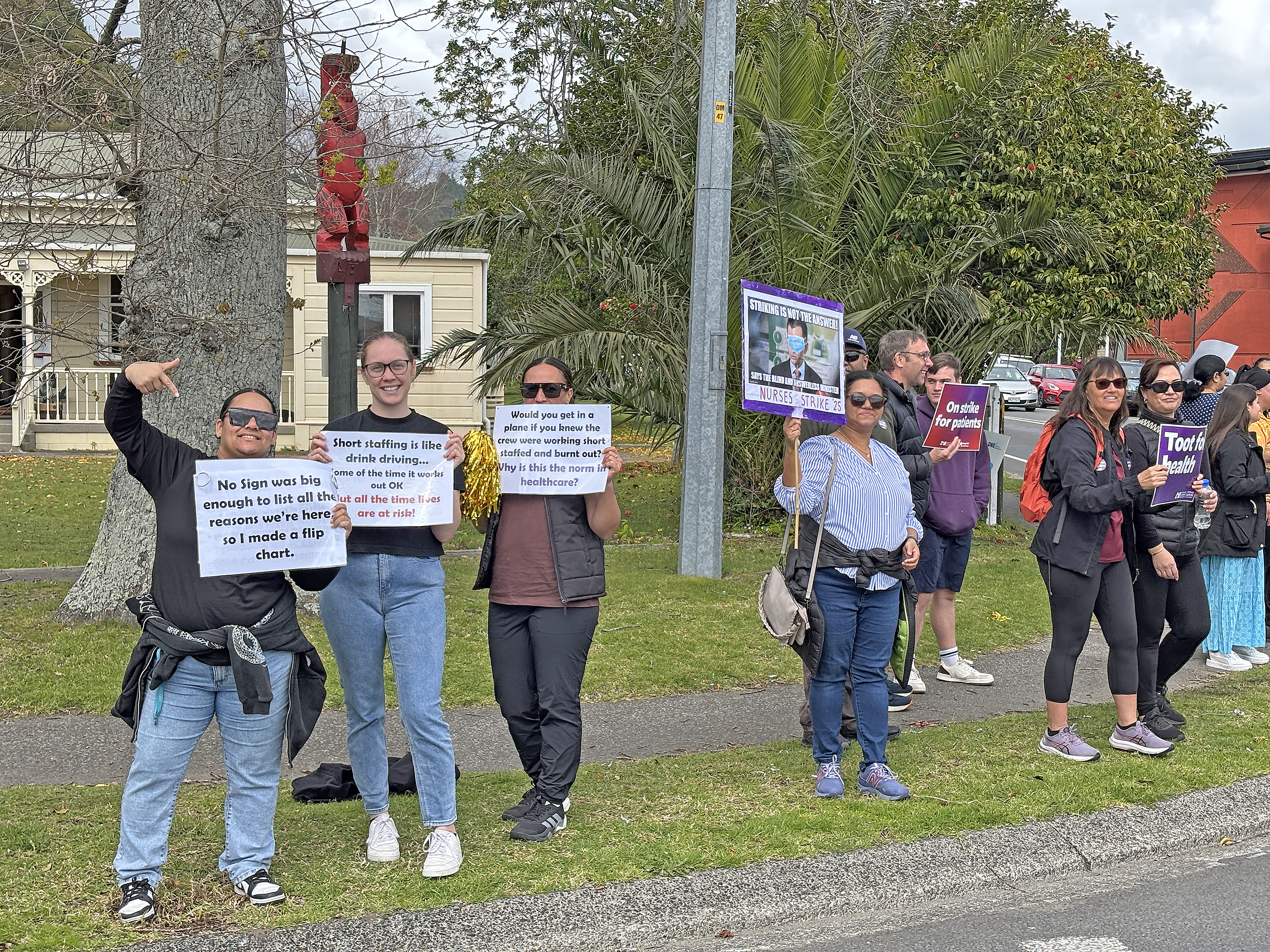Nurses take to the pavement

RISKS: Protesters draw comparisons between short staffing risks and drink driving, and other industries. Photos Brianna Stewart E5362-02
News Editor
Whakatāne nurses returned to the streets this week to picket in continued protests for safe staffing levels.
The strikes were a continuation of similar protest action taken last month.
More than 36,000 New Zealand Nurses Organisation nurses, midwives, healthcare assistants and kaimahi hauora across the country walked off the job between 7am and 11pm on Tuesday and Thursday this week in a complete withdrawal of labour.
Local nurse Tracy Black said they were striking for safe staffing, not just for themselves, but for their patients, too.
“If they’re not safe, we’re not safe,” she said.
“We see it time and time again in our hospital that a particular ward will have 35 patients and five nurses. And that’s a good day.”
Another element of the strike was pay conditions. Ms Black said it was about getting paid what they were worth.
“This Government needs to come back around the table with a decent pay offer, not just the 1 percent they’ve offered to doctors, nurses, firefighters, the police, and teachers.
“They need to stop, think about the cost of living, and come back to us with a decent offer.
“We're ready; are they ready to give it to us?”

Co-convenor Sharon Powley said nurses did not work with ratios to determine staffing levels, but rather the tool Care Capacity Demand Management.
The tool assesses how many nurses should be working depending on the severity of their patients’ illnesses or conditions.
Ms Powley said it had been used in the Bay of Plenty for about 15 years.
“It's a really good tool.
“Over the years we have had what we call an uplift in staff to meet that, but we now have a government that clearly want it gone, because what it says to them is that they need to employ a whole lot more staff.
“Patients have got sicker; people live longer, our medicines are better, hospitals are not a place for convalescence like they used to be. They are for really sick people.
“So, you need to have enough people to meet that demand.
“We put people out into the community; you need nurses in the community to meet that demand, and that’s not how it is.”
The support from the community was clear by the frequency and volume of honking horns from vehicles driving around the roundabout.

Brenda Close said it was encouraging to have that support.
“One of the good things about Whakatāne is that it’s a smaller community, so the degrees of separation are smaller.
“Most people who have driven past this morning have either been in hospital themselves or had someone in hospital, so they have a relationship with the people who are fighting for better conditions and better care.”
Among the people picketing yesterday were nursing students from Te Whare Wānanga o Awanuiārangi.
“The students are our future, and they’re another reason why we’re here today, so they’ve got employment to come through to,” Ms Close said.
“We're standing here not just for us now, we’re actually thinking about the future workforce that are coming through behind us, to make sure they’ve got a job as well.”
No further strikes are planned, though that could change depending on votes by NZNO members.
A copy of the Buller Declaration, a petition and nationwide movement that declares the country's healthcare system is in a crisis and calls for urgent government action to address it, was available to be signed.